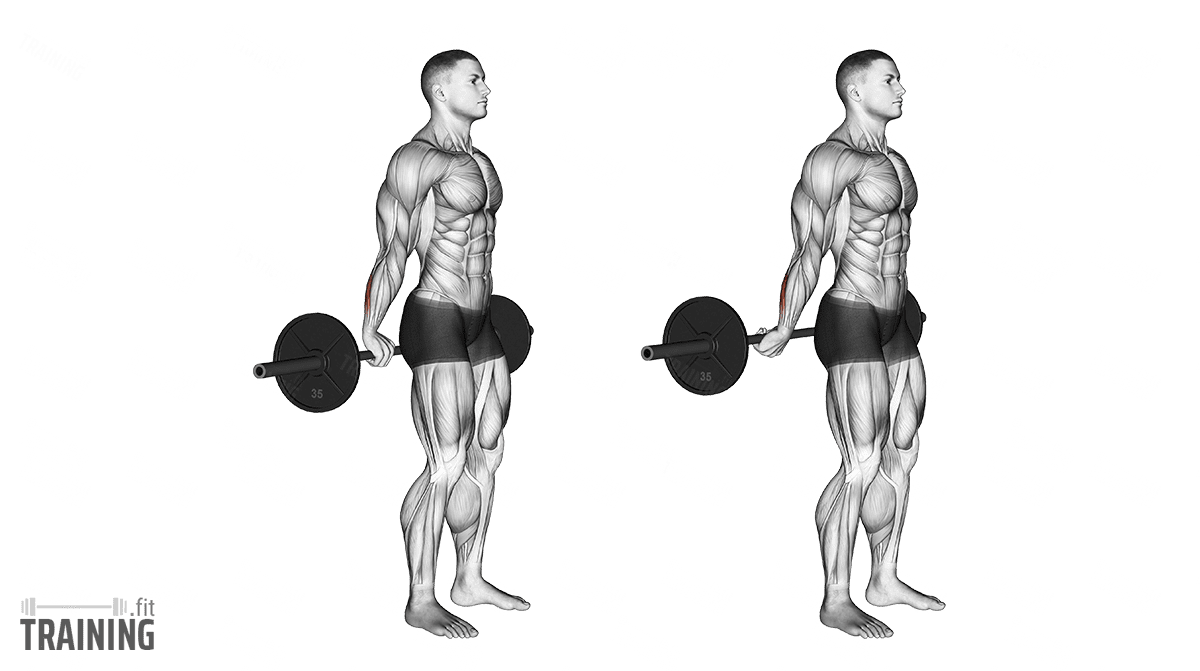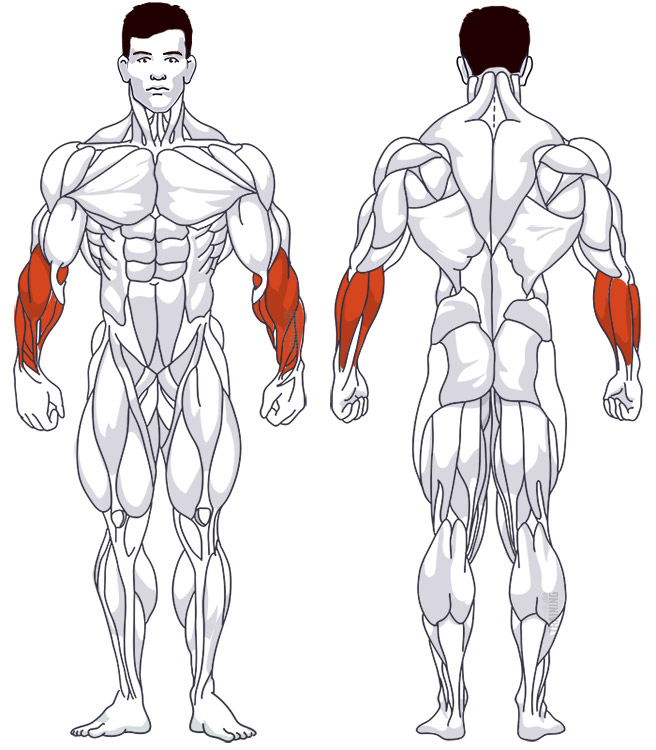Reverse Standing Wrist Curl
Isolation exercise, Free weightsOverview

Main muscles
- Forearm: Finger extensor
(Musculus extensor digitorum) - Forearm: Short radial hand extensor
(Musculus extensor carpi radialis brevis) - Forearm: Long radial hand extensor
(Musculus extensor carpi radialis longus) - Forearm: Brachioradialis
(Musculus brachioradialis)
Training plans
Reverse Standing Wrist Curl is a suitable substitute for similar exercises in or as a supplement to various training plans.
Reverse Standing Wrist Curl: Basics and alternatives

Involved main muscle groups:
Reverse Standing Wrist Curl
The reverse standing wrist curl stands out among forearm curl exercises because of its unique body position. Instead of stabilizing your forearms while sitting on a weight bench or resting them on your thighs, your arms are positioned sideways behind your back. However, the movement is similar to other exercises, as you hold a barbell in your hand and move the weight by flexing and extending your wrists.
As alternatives to reverse standing wrist curls, you can consider barbell wrist curls with an underhand grip or an overhand grip.
Correct Execution
Unlike other forearm curl variations, curls behind the back are performed with an overhand grip (with the back of your hand facing forward). To ensure good muscle balance and equally focus on the flexors and extensors in your forearms, you should consider other variations as well.
This is helpful because the range of motion for this exercise is slightly less than for supported variations.
Video tutorial
Step-by-step instructions
To perform the reverse standing wrist curl, stand in front of a barbell, ideally in a power rack. Grip the bar with an overhand grip, palms facing forward, and hands shoulder-width apart.
Lift the barbell out of the rack, take a few steps back, and stand with your feet hip-width apart.
Engage your core and straighten your back. Your arms are behind your back, holding the barbell firmly in your hands.
Slightly retract your shoulder blades. You’re now in the starting position.
Bend your wrists as far as possible without causing discomfort or pain. This will move the barbell upwards. Keep your shoulders and upper arms still. After a brief moment, lower the weight back to the starting position by slowly and carefully straightening your wrists.
Common Mistakes
The most common mistake when doing the reverse standing wrist curl is jerking your shoulders to move the weight. A minimal shoulder movement isn’t always avoidable due to the flexing of the forearm flexors. However, the weight movement should come exclusively from flexing and extending your wrists, not from lifting your shoulders.
Jerky movements also increase the risk of injury – in both your wrists and shoulders. So, make sure to perform the exercise without swinging or jerking movements.